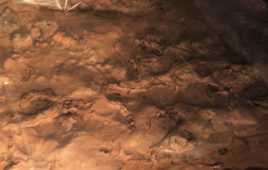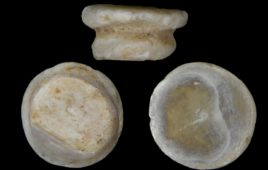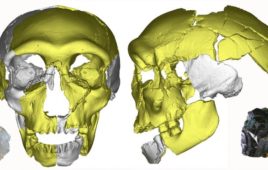 The 500-lb stone slab was buried for more than 2,500 years in an area northeast of Florence, Italy. It was close to four feet tall and over two feet wide. Archaeologists found that the stele, the name of such stone slabs, was etched with at least 70 legible letters and punctuation marks. And it may provide a window into a civilization shrouded in mystery.
The 500-lb stone slab was buried for more than 2,500 years in an area northeast of Florence, Italy. It was close to four feet tall and over two feet wide. Archaeologists found that the stele, the name of such stone slabs, was etched with at least 70 legible letters and punctuation marks. And it may provide a window into a civilization shrouded in mystery.
Before Rome became the ancient powerhouse it was, the Etruscan civilization controlled a majority of what is now Italian land. According to the Khan Academy, the civilization established the cities that went on to become Florence, Pisa, and Siena, among others. When the Romans eventually seized power, they inherited many Etruscan cultural and artistic traditions, from gladiatorial combat and temple design to hydraulic engineering and religious rituals.
However, Etruscan texts have been hard to come by for archaeologists. Most of what’s been recovered extends to short funerary inscriptions with names and titles.
“Inscriptions of more than a few words, on permanent materials, are rare for the Etruscans, who tended to use perishable media-like linen cloth books or wax tablets,” said University of Pennsylvania Museum’s Jean MacIntosh Turfa, an Etruscan scholar, in a statement. “This stone stele is evidence of a permanent religious cult with monumental dedications, at least as early as the Late Archaic Period, from about 525 to 480 B.C.E.”
The discovery was made by the Mugello Valley Archaeological Project, which investigates the Etruscan site of Poggio Colla. Archaeologist Gregory Warden, of Southern Methodist University, is co-director and principal investigator of the project.
Religion was an integral part to the Etruscan lifestyle. The stele was buried in the foundations of a monumental temple, indicating that the site was reused following changes to the town and social structure.
“We know how Etruscan grammar works, what’s a verb, what’s an object, some of the words,” Warden said in a statement. “But we hope this will reveal the name of the god or goddess that is worshipped at this site.”
Rex Wallace, an Etruscan language expert from the University of Massachusetts Amhest, will study the text.
Using full photogrammetry and laser scanning, the researchers will document the details of the sandstone slab.
R&D 100 AWARD ENTRIES NOW OPEN:
Establish your company as a technology leader! For more than 50 years, the R&D 100 Awards have showcased new products of technological significance. You can join this exclusive community! Learn more.




